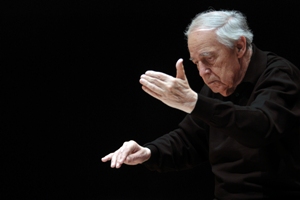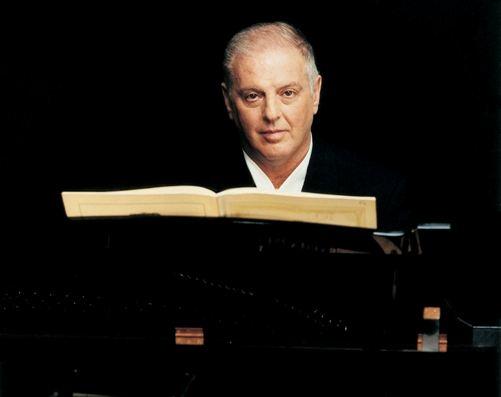What next - Boulez and Daniel Barenboim in Tchaikovsky and Rachmaninov? The two numbered Liszt concertos are probably as far as they're going to go in lacier romantic repertoire, and last night it didn't feel far enough to justify the predictable standing ovation. Like three of the works on the advertised programme - Wagner's Siegfried Idyll the exception - the performances were masterly and original without hitting the heights, revealing in orchestral textures and pianistic versatility without being revelatory.
Curiously, of the two it was Barenboim who fell shorter of every facet required by Liszt's artificially if intriguingly constructed experiments in concerto form. His playing felt a bit warhorsy in double-octave cannonades, sustaining pedal covering the hit-and-miss heavier attacks where you felt a younger pianist might have coruscated more clearly and with greater exuberance. The final victory charges of both concertos, too, fell a bit short of the bravura which justifies the means to an end, though this may have been the aim of the partnership - not one that worked for me, given Liszt's limited if always tuneful rhetoric. But in between there was much novelty: the left-hand roar as the Second stokes up its resources, the pearly dialogues with sophisticated orchestral soloists at the heart of the later "symphony-concerto" and the treatment of the First's inner movements as contrasting transcendental studies.
Pierre Boulez (pictured below by A Warme-Janville) encouraged real teamwork from the Berliners, with the best effect first - the way the woodwind launch immediately into the chord-driven melody which dominates the Second Concerto - and translucent string lines, evading the charge of thickness that's more a provenance of Liszt's symphonic poems (which I somehow doubt the master of exquisite sonorities will be tackling any time soon, though he may yet surprise us). But that sliver of ice in the soul which came in useful for shaping Liszt's romantic torrents chilled the baby blood of Wagner's Siegfried Idyll.
It may have been the halfway-house violin sections (two desks apiece, reduced from the still slender-seeming five in the Liszt) which made this feel like a chilly compromise between the chamber ensemble Richard crammed into his lakeside villa for his Cosima on her birthday - a format poetically realised by Pappano and Royal Opera soloists in the Cadogan Hall - and the Karajanesque scale which can also work well, given sufficient tenderness from the conductor.
 Why was it, then, that despite his careful nurturing of every dynamic, Boulez's interpretation felt more like an amniotic homage to the unborn child rather than Wagner's intended welcoming to human activity of his infant son? Even the middle sequence failed to wake up to jolly, articulate life, and though the coda was finely shaded, that elusive degree of humanity kept slipping away between the phrases.
Why was it, then, that despite his careful nurturing of every dynamic, Boulez's interpretation felt more like an amniotic homage to the unborn child rather than Wagner's intended welcoming to human activity of his infant son? Even the middle sequence failed to wake up to jolly, articulate life, and though the coda was finely shaded, that elusive degree of humanity kept slipping away between the phrases.
On the other hand Boulez can't be praised too highly for daring to programme Wagner's early Faust Overture. To be sure, it's no quality match for the comparable specimens by Wagner's great predecessor Weber, and other more spooky homages to the supernatural popped up in the 1840s, not least Verdi's Macbeth and Wagner's own roughly contemporary Flying Dutchman, which briefly seethes in this sketch for the Faust Symphony that Liszt was later to write, along with premonitory Tristanesque love-heavings and a hint of Tannhäuser's holy Elizabeth in what's presumably the Gretchen theme. Again Boulez weighed the light and shade in the work with unerring and far from unshapely judgment.
But it wasn't until Barenboim's encore that the gift to be simple which had been less than well served in the Siegfried Idyll really worked its magic: the chiaroscuro he brought to the Valse oubliée No 1 marked the possible start of a whole new adventure, a probing of Liszt's more mysterious genius, for which we will simply have to wait on a solo recital.














Add comment